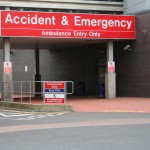
Facial fractures can have an important impact of physical and psychological health and can be costly to treat. Facial fractures commonly results from road traffic accidents (RTAs), assaults, falls, sports and work injuries. RTAs and assaults are often cited as the primary causes although following changes in road safety legislation RTA- related trauma has decreased in many countries and assault has become an increasingly important as an aetiological factor.
The aim of this study was to analyse the demographics, causes and characteristics of maxillofacial fractures managed at several European departments of oral and maxillofacial surgery.
Methods
Data on maxillofacial injuries was collected prospectively on a computerised database from 13 European oral and maxillofacial surgery department. Data was collected from 31st Dec 2102 to 29th Dec 2013. The following data were recorded: gender, age, aetiology, site of facial fractures, facial injury severity score, timing of intervention, length of hospital stay.
Results
- 3396 patients with a total of 4155 fractures were recorded
- 2655 (78.2%) were male and 741 (21.8%) female [ratio 3.6:1].
- The mean age differed from country to country, ranging between 29.9 years (Scotland) and 43.9 (Slovenia) years.
| Cause of injury | PatientsNumber (%) |
| Assault | 1309 (38.5%) |
| Falls | 1050 (30.9%) |
| Sport accidents | 385 (11.3%) |
| RTAs | 375 (11.0%) |
| Work accidents | 117 (3.4%) |
| Other causes | 160 (4.7%) |
- Mandibular fractures were most frequent (1743 fractures; 42%), followed by orbital-zygomatic-maxillary fractures, (24%), orbital fractures (16%), nose fractures (9%) and Le Fort fractures (5%),
- Condylar fractures were the most commonly observed mandibular fracture.
Conclusions
The authors concluded
The results confirm the changing trend in maxillofacial trauma epidemiology in Europe. Maxillofacial trauma cases due to assaults and falls outnumber those due to RTAs.
Commentary
This study is part of the European Maxillofacial Trauma (EURMAT) project and involved oral and maxilla-facial surgery units from Italy; Bulgaria; Estonia; France; Croatia; Oslo, Norway; Bergen, Norway; The Netherlands; Slovenia; Serbia; Ukraine; London, England; Dundee, Scotland. While this study provides a useful comparison at a European levels it is doubtful whether a single centre from each country can be representative of that country given the variations in socio-demographic, economic, and cultural factors that are present. However the studies does provide an interesting overview of the situation and although the findings are broadly similar from unit to unit variations between counties are discussed.
Links
Boffano P, Roccia F, Zavattero E, Dediol E, Uglešić V, Kovačič Ž, Vesnaver A, Konstantinović VS, Petrović M, Stephens J, Kanzaria A, Bhatti N, Holmes S, Pechalova PF, Bakardjiev AG, Malanchuk VA, Kopchak AV, Galteland P, Mjøen E, Skjelbred P, Koudougou C, Mouallem G, Corre P, Løes S, Lekven N, Laverick S, Gordon P, Tamme T, Akermann S, Karagozoglu KH, Kommers SC, Forouzanfar T. European Maxillofacial Trauma (EURMAT) project: A multicentre and prospective study. J Craniomaxillofac Surg. 2015 Jan;43(1):62-70. doi: 10.1016/j.jcms.2014.10.011. Epub 2014 Oct 22. PubMed PMID: 25457465.

@TheDentalElf RT http://t.co/BiV4TU0CVC
Interesante estudio. En Chile no lo podemos saber y podremos pronto. FONIS de Conicyt rechazo un estudio epidemiologico multicentrico….
Don’t miss – Maxillofacial trauma: assaults and falls are the main causes in Europe http://t.co/RuCnfDvFXJ